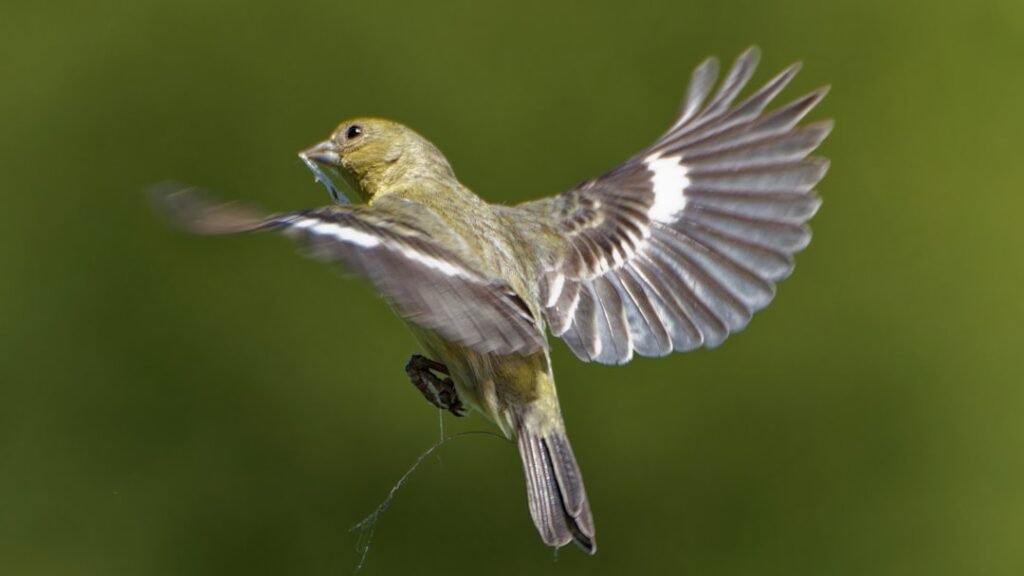Picture this: you’re walking outside on a windy day when you spot something incredible. A small bird hovers perfectly still in front of a flower, then suddenly shoots backward through the air as if defying everything you know about flight. You’re not seeing things. This remarkable phenomenon combines cutting-edge meteorology with extraordinary bird physics to create one of nature’s most fascinating aerial displays.
While most people think backward flight is impossible for birds, scientists have discovered that extreme wind conditions can displace some species over long distances, sometimes in directions opposite to their intended flight path. From hummingbirds using specialized wing mechanics to migrating songbirds caught in powerful storm systems, the physics behind these aerial reversals reveals secrets that meteorologists are only beginning to understand. Let’s dive into the surprising world where atmospheric forces meet biological engineering.
The Science Behind Natural Backward Flight

Hummingbirds are renowned for their extraordinary flying abilities, including the rare skill of flying backward. This unique capability sets them apart from most other bird species and is a testament to their specialized anatomy and flight mechanics.
One of the primary reasons hummingbirds can fly backward is their unique shoulder joint, which functions like a ball-and-socket. This joint allows their wings to rotate almost 180 degrees in all directions, giving them exceptional maneuverability in the air. Unlike conventional birds that primarily generate lift during their downstroke, these tiny aerial acrobats have mastered a completely different approach to flight control.
Extreme Wing Mechanics That Defy Convention

Hummingbirds have highly flexible wings that can move in a figure-eight motion. This motion is crucial for generating lift on both the upstroke and downstroke of their wingbeats, allowing them to hover and change direction rapidly, including flying backward.
Backward flight was facilitated by steep body angles coupled with substantial head flexion, and was also characterized by a higher wingbeat frequency, a flat stroke plane angle relative to horizontal, a high stroke plane angle relative to the longitudinal body axis, a high ratio of maximum:minimum wing positional angle, and a high upstroke:downstroke duration ratio. This intricate coordination requires split-second timing that puts even the most advanced aircraft to shame.
Power Requirements for Reverse Flight

Hummingbirds possess powerful pectoral muscles that account for about 30% of their body weight. These muscles provide the strength needed for their rapid and precise wing movements. The rapid contraction and relaxation of these muscles enable hummingbirds to beat their wings up to 80 times per second, providing the agility required for backward flight.
Surprisingly, research has revealed something counterintuitive about the energy costs. In sustained backward flight, oxygen uptake is similar to that in forward flight at equivalent airspeed, and is about 20% lower than hovering. This means that flying backward is actually more energy-efficient than hovering in place, challenging our assumptions about the physics of reverse motion.
When Extreme Winds Force Mass Backward Migration

Wind was a strong predictor of bird ground speed, explaining 10-66% of the variance, depending on species. Understanding how environmental conditions, especially wind, influence birds’ flight speeds is a prerequisite for understanding many important aspects of bird flight, including optimal migration strategies, navigation, and compensation for wind drift.
Nocturnally migrating birds experienced significant wind drift, even though they often flew at 90° or more to the wind direction. Significantly, more birds undertook reoriented diurnal flights after nocturnal wind drift, and wind influence, nocturnal migration intensity, and time of season together explained the majority of variation in counts of these “morning flights.” These corrective flights often involve traveling in directions opposite to their intended destination to compensate for wind displacement.
Meteorological Forces That Create Aerial Highways

Under conditions of extreme winds, the birds likely cannot entirely control their route and can be pushed into zones outside their normal range or over land masses that they never frequent otherwise. Compensation for drift is likely not possible in such strong winds, but drifting on the outer western edge of the cyclone should generally be a safe strategy.
Both over land and at sea many migratory species power migration by actively flapping their wings, for these migrants mesoscale and synoptic patterns in horizontal winds are extremely important, whereas the main importance of turbulence may be its disruption of horizontal flow. When these patterns align with storm systems, birds can find themselves riding massive atmospheric conveyor belts in reverse.
The Physics of Wind Displacement

Birds adjust the angle of their bodies, so it’s not held back by the wind. They keep their eyes on their targeted destination while trying to maintain a forward motion to reach there. However, when wind speeds exceed a bird’s maximum flight capabilities, physics takes over completely.
While a person walking against the wind experiences extra drag, a bird flying against the wind does not; the wind adds velocity (relative to the Earth), not drag. A bird cannot progress against a wind that is faster than the highest airspeed it can achieve. This fundamental principle explains why even the strongest fliers can end up traveling backward during extreme weather events.
Atmospheric Pressure and Bird Behavior

Wind profit, atmospheric pressure, precipitation, and cloud cover affect probability of departure from breeding and wintering sites. Meteorologists have discovered that birds can actually sense approaching severe weather systems long before humans detect them.
Birds may forecast cyclone arrival based on associated meteorological conditions (wind, barometric pressure) or infrasound. The ability of birds to detect infrasound has led to the hypothesis that birds may be able to forecast the arrival of a storm or cyclone and make a decision to avoid it. Yet sometimes, even with advance warning, they become trapped in massive wind systems that force backward travel.
Aerodynamic Adaptations for Extreme Conditions

Birds use their wings as a suspension system, allowing them to cope with harsh fluctuations of the wind. They angle their bodies towards the direction of the wind, keeping their heads and torsos stable. They use aerodynamics to their advantage, keeping their bodies stable using the power of their winds.
Wings have sweet spots – most forces from the wind act near these spots, reducing the impact on the bodies. Birds also use wing morphing to change the posture and the direction of their wings for better withstanding wind. These adaptations allow some species to maintain control even when traveling hundreds of miles off course.
Storm Avoidance Strategies Gone Wrong

Frigatebirds determine the proximity of cyclonic conditions and either stay ashore if they are in the breeding colony or circumvent the cyclone if they are at sea or non-breeding. They made these decisions when cyclones were at considerable distances from their locations, with detection ranges varying based on storm intensity. This result suggests that the perception of wind conditions preceding the cyclone may be the signal that allows them to forecast the risks of foraging in the coming hours.
Despite their sophisticated weather prediction abilities, birds sometimes miscalculate storm intensity. When escape routes become blocked by converging weather systems, they have no choice but to ride the winds wherever they lead, sometimes resulting in significant displacement that can carry them far off their intended routes.
The Role of Topography in Wind-Driven Flight

As winds approach the side of an obstacle like a hill or large building, the air is deflected upward. A bird or glider flying within this deflected air flow will also be carried upward to a higher altitude with very little effort. If the wind is strong enough, the deflected air may rise tens or even hundreds of feet in altitude.
A mountain wave is a unique phenomenon that occurs when a strong wind blows perpendicular to mountains. This wind flows over the top of the mountain or ridge and down the opposite side before impacting the ground or a layer of air near the ground. This impact causes the air to deflect back upwards by thousands or tens of thousands of feet. These powerful mountain wave systems can displace birds across vast distances, creating some of the most dramatic cases of wind-driven displacement during migration.
Climate Change and Extreme Wind Events

Understanding these phenomena becomes increasingly important as climate change intensifies storm systems worldwide. The extraordinary adaptations of birds to contend with atmospheric conditions during their migratory flights have captivated ecologists for decades. During the 21st century technological advances have sparked a revival of research into the influence of weather on migrating birds. Using biologging technology, flight behaviour is measured across entire flyways, weather radar networks quantify large-scale migratory fluxes, citizen scientists gather observations of migrant birds and mechanistic models are used to simulate migration in dynamic aerial environments.
These technological advances are revealing that backward flight events are becoming more frequent and covering greater distances. As atmospheric patterns shift and intensify, we’re witnessing bird migrations that would have seemed impossible just decades ago, with some species adapting their behavior in real-time to survive increasingly chaotic skies.
The intersection of extreme meteorology and avian physics continues to surprise researchers. From hummingbirds perfecting their backward flight techniques to massive storm systems displacing entire flocks across continents, these phenomena remind us that nature’s engineering often surpasses our wildest imagination. As climate patterns continue evolving, understanding these remarkable adaptations becomes crucial for predicting how our feathered friends will navigate an increasingly turbulent world.
What do you think about these incredible aerial reversals? The next time you see a bird seemingly defying physics, remember there’s probably some fascinating science at work behind those seemingly impossible maneuvers.

Jan loves Wildlife and Animals and is one of the founders of Animals Around The Globe. He holds an MSc in Finance & Economics and is a passionate PADI Open Water Diver. His favorite animals are Mountain Gorillas, Tigers, and Great White Sharks. He lived in South Africa, Germany, the USA, Ireland, Italy, China, and Australia. Before AATG, Jan worked for Google, Axel Springer, BMW and others.




